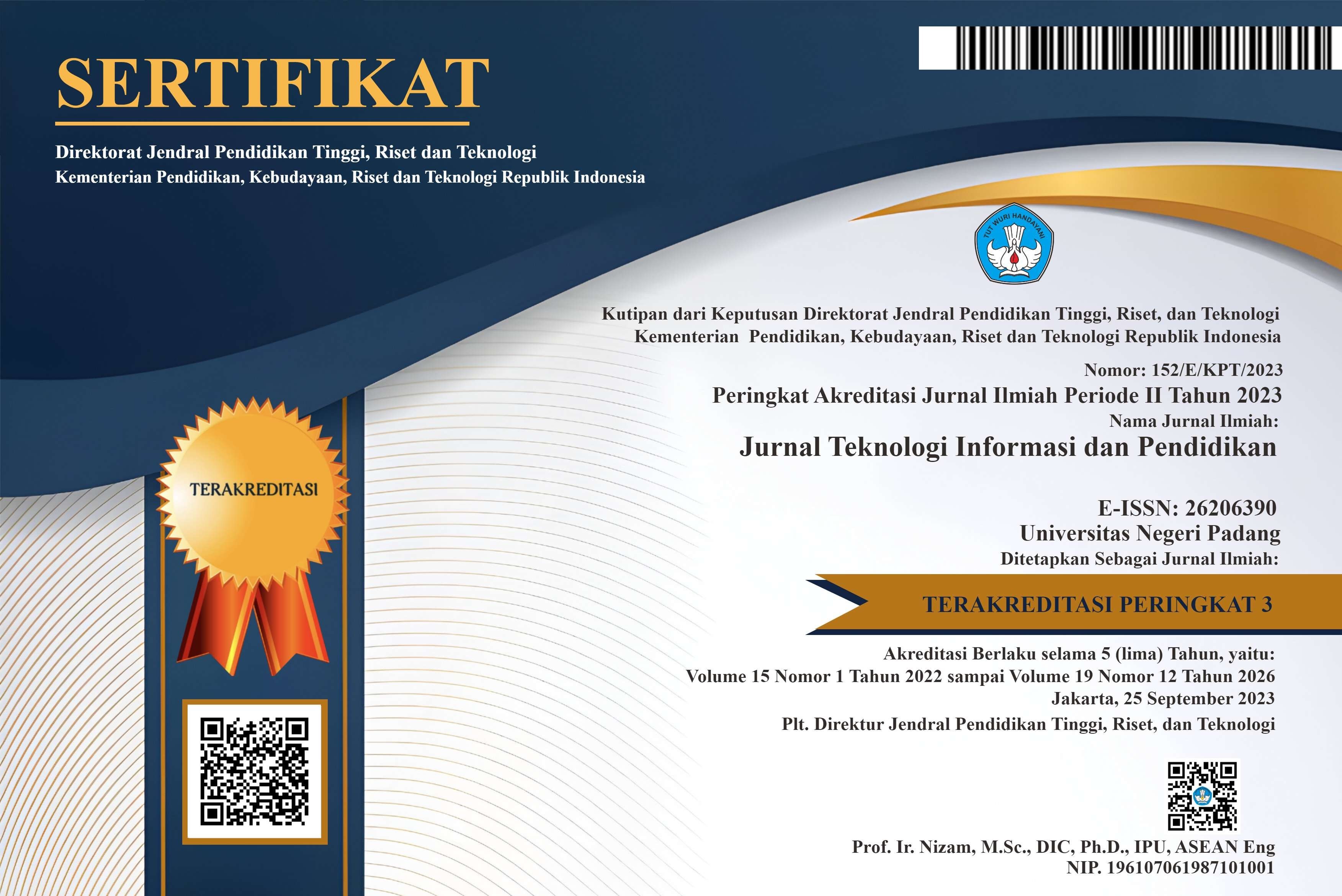College Student's Perception toward " Peduli Lindungi" Application through the Usability Scale Method
Abstract
The Covid-19 pandemic that occurred in Indonesia had an impact on various sectors such as education, health, and the economy. These impacts provide enormous losses for the community as well as the government. The government has issued many policy instruments to suppress the impact caused by the Covid-19 pandemic. One of the policies made by the government as a form of dealing with the Covid-19 pandemic is to create an application that functions as a tool for tracking people's movements. This government-made Application is called the Peduli Lindungi application [3]. The Ministry of Communication and Informatics develops the Peduli Lindungi application, the Ministry of Health, the Ministry of SOEs, and the National Disaster Management Agency (BNPB). At first, the Care for Protect application was named TraceTogether. The Peduli Lindungi application's primary function is to digitally detect and identify location data and community information in supervising the handling of Covid-19 [4]. This Peduli Lindungi application is used at almost all levels of Indonesian society, including students. Students who incidentally are the generation who are familiar with the Application are expected to be able to use the Care Protect application quickly. Still, it is necessary to measure the feasibility of the system to find out students' views on the feasibility of the existing system in the Care Protect application. This study uses quantitative methods with data analysis tools using the System Usability Scale (SUS) method. Of the 73 respondents who took part in the survey, all of whom are application users and students, it is known that the usability of the Peduli Lindungiapplication in the eyes of students is still not good.
References
W. Sudiarsa and G. B. Wiraditya, “Heuristic Evaluation Usability Analisys on Information and Tracking Covid-19 Application Peduli Lindungi Using Heuristic Evaluation,” J. Inf. Technol. Comput. Sci., vol. 3, no. 2, pp. 354–364, 2020.
C. E. Putri and R. E. Hamzah, “Aplikasi Pedulilindungi Mitigasi Bencana Covid-19 Di Indonesia,” J. Pustaka Komun., vol. 4, no. 1, pp. 66–78, 2021, doi: 10.32509/pustakom.v4i1.1321.
D. Herdiana, “Aplikasi Peduli Lindungi: Perlindungan Masyarakat Dalam Mengakses Fasilitas Publik Di Masa Pemberlakuan Kebijakan Ppkm,” J. Inov. Penelit., vol. 2, no. 6, pp. 1685–1694, 2021.
M. S. Nurjanah, “ANALISIS USER EXPERIENCE APLIKASI MOBILE PEDULI LINDUNGI MENGGUNAKAN HEART METRICS,” J. Syntax Admiration, vol. 3, no. 8.5.2017, pp. 2003–2005, 2022.
D. P. Putra Setyadi, “Analisa Usability Aplikasi Emasdigi Sebagai Perdagangan Emas Online Berbasis Android,” J. SITECH Sist. Inf. dan Teknol., vol. 2, no. 2, pp. 165–172, 2019, doi: 10.24176/sitech.v2i2.3863.
J. Nielsen, “Usability 101: Introduction to Usability,” Jan. 04, 2012. https://www.nngroup.com/articles/usability-101-introduction-to-usability/ (accessed Jul. 07, 2018).
Y. Nurhadryani, S. K. Sianturi, and I. Hermadi, “Pengujian Usability untuk Meningkatkan Antarmuka Aplikasi Mobile,” J. Ilmu Komput. Agri-Informatika, vol. 2, no. 2010, pp. 83–93, 2013.
D. Rubin, J., & Chisnell, Handbook of usability testing [electronic resource] : How to plan, design, and conduct effective tests (2nd ed.). 2008.
S. Tuomo, “Usability is a key element of User Experience,” Landisgyr. 2017, [Online]. Available: https://eu.landisgyr.com/better-tech/usability-is-a-key-element-of-user-experience.
J. Nielsen, “Usability 101 : Introduction to Usability Why Usability is Important How to Improve Usability,” Focus (Madison)., 2006.
B. Shackel and S. Richardson, Human Factors for Informatics Usability. New York: Cambridge University Press, 1991.
IxDF, “An Introduction to Usability | Interaction Design Foundation (IxDF),” IxDF. 2022.
L. Windlinger and D. Tuzcuoğlu, “Usability theory,” A Handb. Manag. Theor. Model. Off. Environ. Serv., pp. 173–183, 2021, doi: 10.1201/9781003128786-15.
A. Sidik, “Penggunaan System Usability Scale (SUS) Sebagai Evaluasi Website Berita Mobile,” Technol. J. Ilm., vol. 9, no. 2, p. 83, 2018, doi: 10.31602/tji.v9i2.1371.
J. Sauro, “Measuring Usability With The System Usability Scale (SUS),” Measuring Usability. pp. 1–5, 2011.
J. R. Lewis and J. Sauro, “Item Benchmarks for the System Usability Scale,” J. Usability Stud., vol. 13, no. 3, pp. 158–167, 2018.
Copyright (c) 2022 Jurnal Teknologi Informasi dan Pendidikan

This work is licensed under a Creative Commons Attribution-ShareAlike 4.0 International License.















.png)














